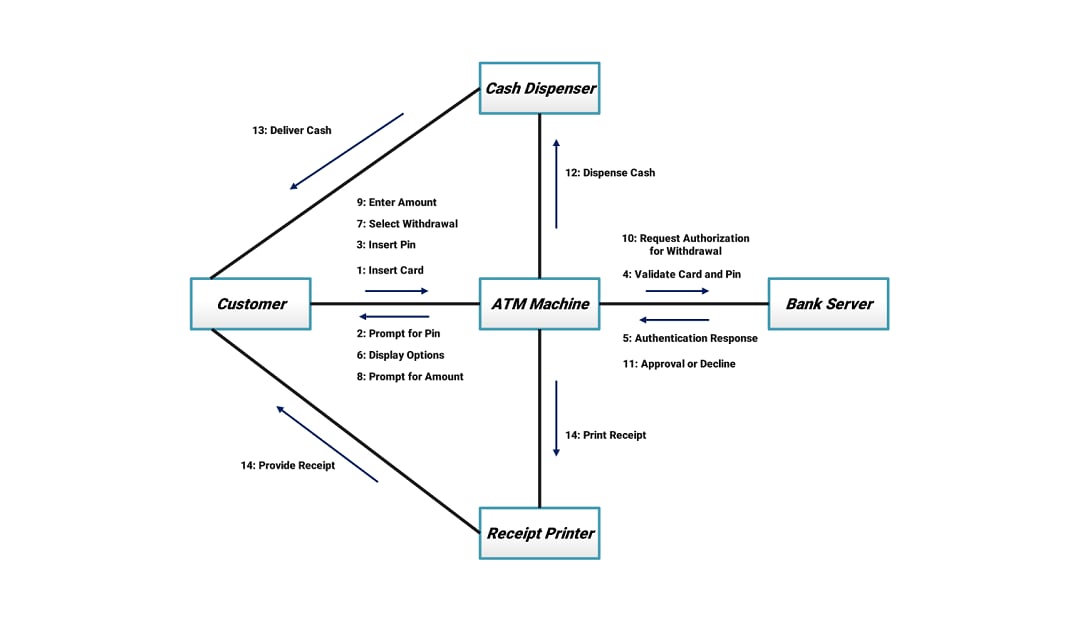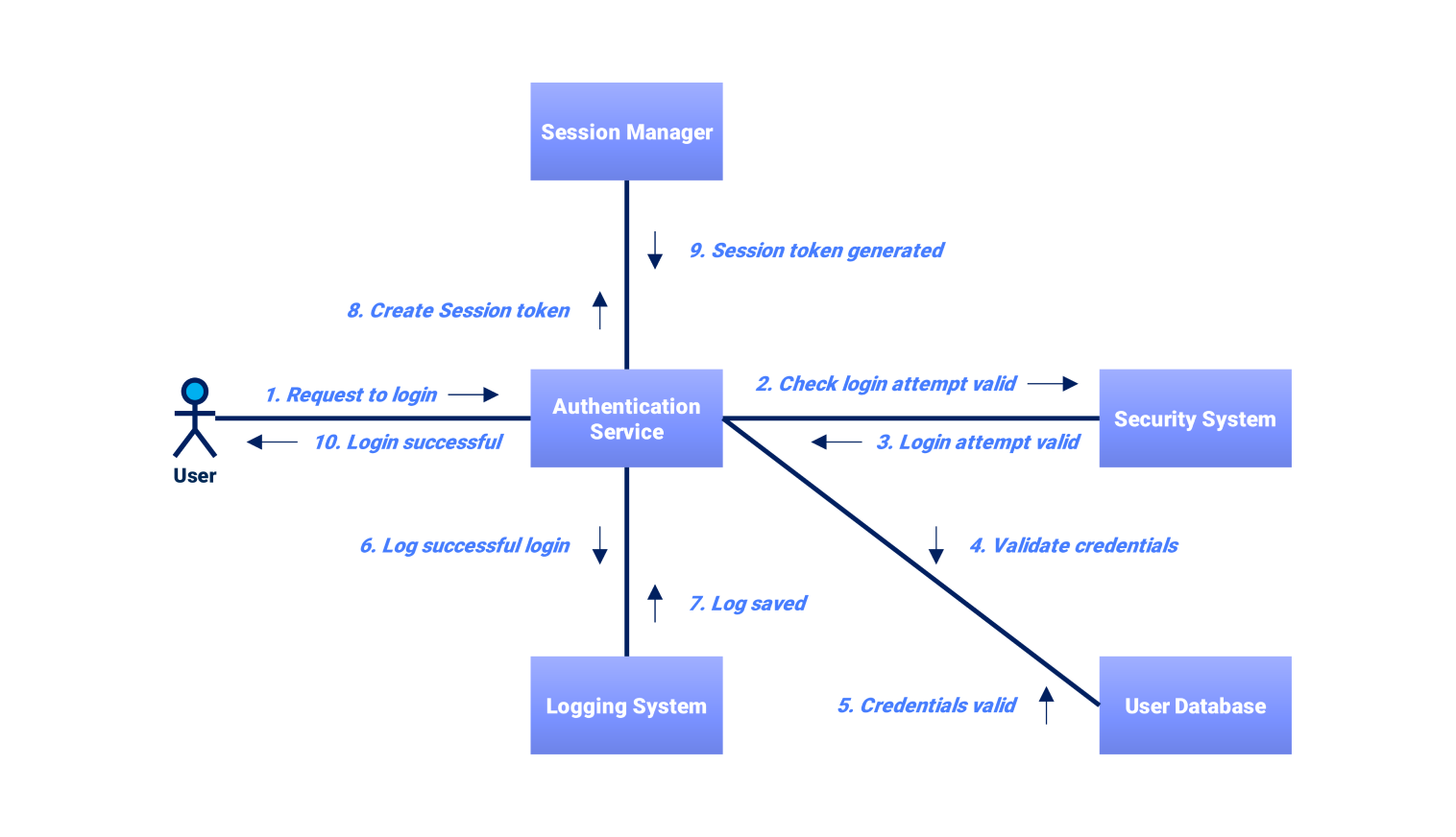- All templates
- Communication diagram templates
- Communication diagram ATM
About this communication diagram for ATM
This UML communication diagram for ATM illustrates the series of operations that a customer will go through in order to withdraw cash using the automated teller machine. It lists processes in stages. It involves the user, the ATM, the cash dispenser, the receipt printer, and the bank server. It details how each action triggers processes for smooth transactions.
The customer starts the process by inserting their card into the ATM. This triggers the entire function. Along with this part of the process, the ATM then retrieves a PIN from the user to confirm their identity. This PIN is then checked against the bank's database to enable secure access to the system.
After the system verifies the customer, the ATM displays options to withdraw cash. After selecting the withdrawal option, the customer has to state the intended amount that they wish to withdraw.
The ATM transmits a request to the bank server. It verifies the card number and PIN and checks for enough funds in the customer's account. After this, an authentication response is sent back to the ATM. If the transaction is approved, the server sends an authorization, allowing the withdrawal to continue.
Once approved, the ATM orders the cash dispenser to issue the exact value of cash. The money disburser subsequently releases cash securely to fulfill the withdrawal process. At the same time, the command is given to the receipt printer to produce a detailed transaction receipt.
Thus, the customer successfully collects cash along with their card and a receipt before winding up the session. The UML communication diagram for ATMs demonstrates an effective ATM withdrawal process. Each component and action assures secure, user-friendly transactions.
Related templates
Get started with EdrawMax today
Create 210 types of diagrams online for free.
Draw a diagram free Draw a diagram free Draw a diagram free Draw a diagram free Draw a diagram free


